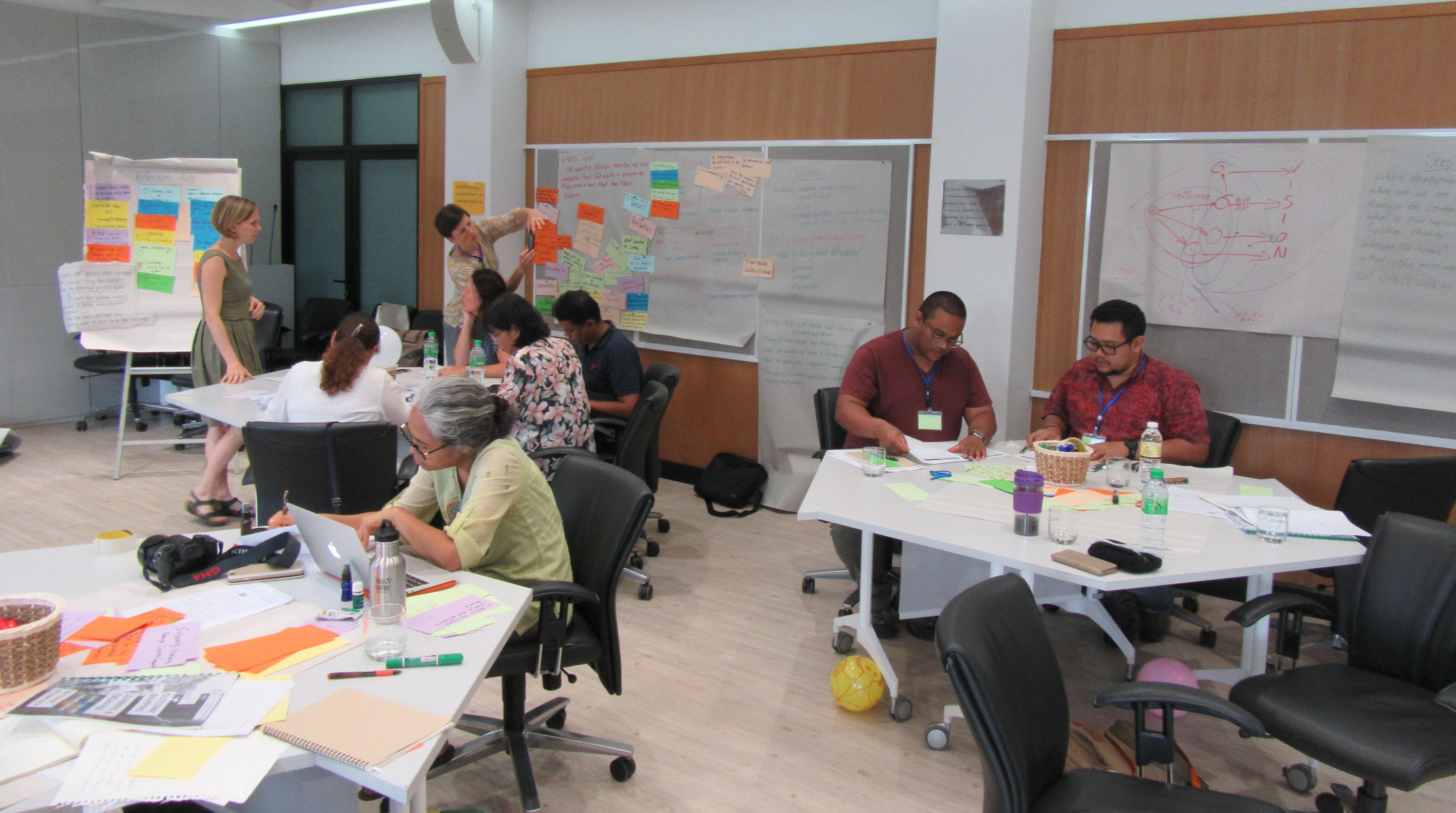Learning and exchanging on outcome mapping

SHARE's M&E Officer, Emily Balls, recently attended an event on outcome mapping, a methodology used to plan and assess projects that bring about change. Here, she reflects on the event and what she learnt...
I recently travelled to Bangkok, Thailand to attend the Outcome Mapping Learning Community’s Learning and Exchange event, joining a group of OM practitioners from Thailand, Sri Lanka, Indonesia, New Zealand, Germany, Sweden, the Phillippines and beyond! After a short refresher on outcome mapping, the event primarily focused on outcome mapping monitoring as well as introducing outcome harvesting – an approach for project evaluation.
Monitoring outcome mapping
As OM monitoring has been a major part of my work at SHARE, I was excited to learn more about this topic. At SHARE I have designed a tailored monitoring system – while this has been working well for the past couple of years, I was still eager to learn about others’ work and to find areas for potential improvement.
The course facilitators shared a range of interesting and diverse experiences - from routine weekly monitoring in India, to extensive team reflection meetings in Cambodia, to a large programme that aggregated and analysed global data through Google forms. These examples were a great reminder that OM monitoring is adaptable and flexible to fit different contexts. I felt reassured about my own approach and also inspired to try new things in the future – such as including more visuals in monitoring reports.
The monitoring session gave me some new ideas for my own practice – such as doing focused monitoring on key stakeholders or specific progress markers in each monitoring cycle (rather than monitoring all stakeholders and progress markers every cycle!). It also reaffirmed the value of the annual face to face workshops I’ve been running with SHARE’s partners – particularly for identifying and discussing change that was not predicted in outcome mapping plans.
Introducing outcome harvesting
As SHARE’s M&E specialist, I work a lot with outcome mapping but I was not so familiar with the complementary approach of outcome harvesting. Outcome harvesting is used primarily for evaluation, whereas outcome mapping is used for planning, design and monitoring. OH seeks to go further than output focused evaluation - seeing what counts, rather than counting what’s seen.
We watched this video as a metaphor for output focused versus outcome focused evaluation! I won’t spoil it for those who haven’t seen it, suffice to say it is a great illustration of the things we can miss if we are searching for predefined outputs, and aren’t able to see the bigger picture.
Outcome harvesting looks for verifiable outcomes – changes in behaviour, attitudes, relationships or policies - which can be triangulated by documentation or talking to different stakeholders. We heard some fascinating case studies of using outcome harvesting for evaluations in Afghanistan and Cambodia. While OM can be a great evaluation approach to take for projects that have already used outcome mapping, it can actually be applied to any complex project. I hope to have the opportunity to try out outcome harvesting in the future!
